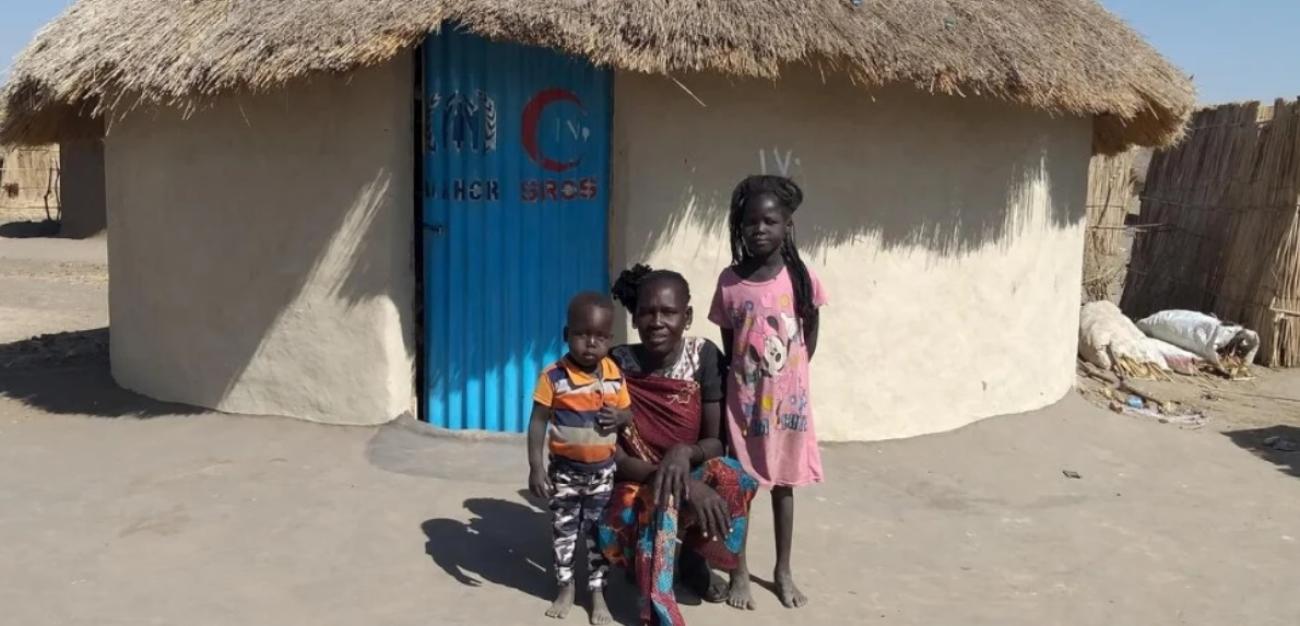The sense of ownership and privacy that Nyafuoj Aban, 44, felt after she finished building her mud-brick hut is one that she cherishes deeply to this day.
A year ago, Aban and her ten children, aged between four and 27 years, moved into their more solid house, locally known as a ‘tukul’ in Al Jameya camp in Sudan’s White Nile State. Before, they were living with almost 20 relatives in two temporary shelters for two and a half years.
“This is my house, I own it. It protects me and my children and gives us privacy,” beams Aban as she spreads her arms wide to capture the expanse of her round grass-thatched hut.
The family fled their home in southern Malakal, South Sudan, when war broke out in December 2013, living in different villages that were relatively peaceful before finally arriving in Sudan in April 2014. Aban, who was then six months pregnant, did not receive her own individual shelter due to the high numbers of refugees arriving at the time and a shortage of land that did not allow for space to be allocated. Instead, all newly arriving refugees were being placed in communal shelters as UNHCR, the UN Refugee Agency, and the Government of Sudan tried to find the necessary resources to accommodate them.
Tired of living in a communal shelter, Aban gathered her children and moved in with other relatives in an emergency shelter. Made of temporary materials like plastic sheets and papyrus mats, emergency shelters are made to minimum standards, intended to provide refugees with shelter for a short time.
“This is my house, I own it. It protects me and my children and gives us privacy.”
“I am grateful that my relatives took us in, but life was not easy. We were too many and since it was not our home, we did not have the freedom to live the way we wanted,” she explains.
Aban decided to register for a project to pilot durable shelters for South Sudanese refugees in Sudan. The project required refugees to participate in building their own shelters by making bricks, fetching water and working with builders contracted by UNHCR and partners.
“My friends tried to discourage me from joining, saying that I would not manage the tough work, but I had nothing to lose by trying,” recalls Aban.
Without her husband around to support her – he remained behind in South Sudan – Aban, with the help of her children, collected soil and water to make bricks. They laid them in the scorching sun, the hope of a new home their major driving force. In total, 769 families participated in building their own tukuls.
Aban did the finishing of the floor and plastered the walls herself – a hefty task, but one she had no qualms about.
“Back home in South Sudan, this is a woman’s job, so I did everything alone,” she says proudly.
Plastering the hut serves an important aesthetic purpose. The placement of a protective layer over the bricks also helps reduce exposure to rain and other elements and makes the bricks firmer, prolonging the hut’s durability. Aban and her family are assured of safety from the elements and from potentially losing their shelter due to a storm or fire outbreak.
As she waits to see what the future holds, the family is trying to go on with their lives. Aban currently has no job, but during the harvest season, she and her older children join hundreds of other refugees to work on local Sudanese farms, harvesting sorghum and sesame, to supplement what they receive from aid agencies.
Sudan currently hosts over 747,000 refugees from South Sudan, 36 per cent of them living in White Nile State.
By Sylvia Nabanoba in White Nile State, Sudan


